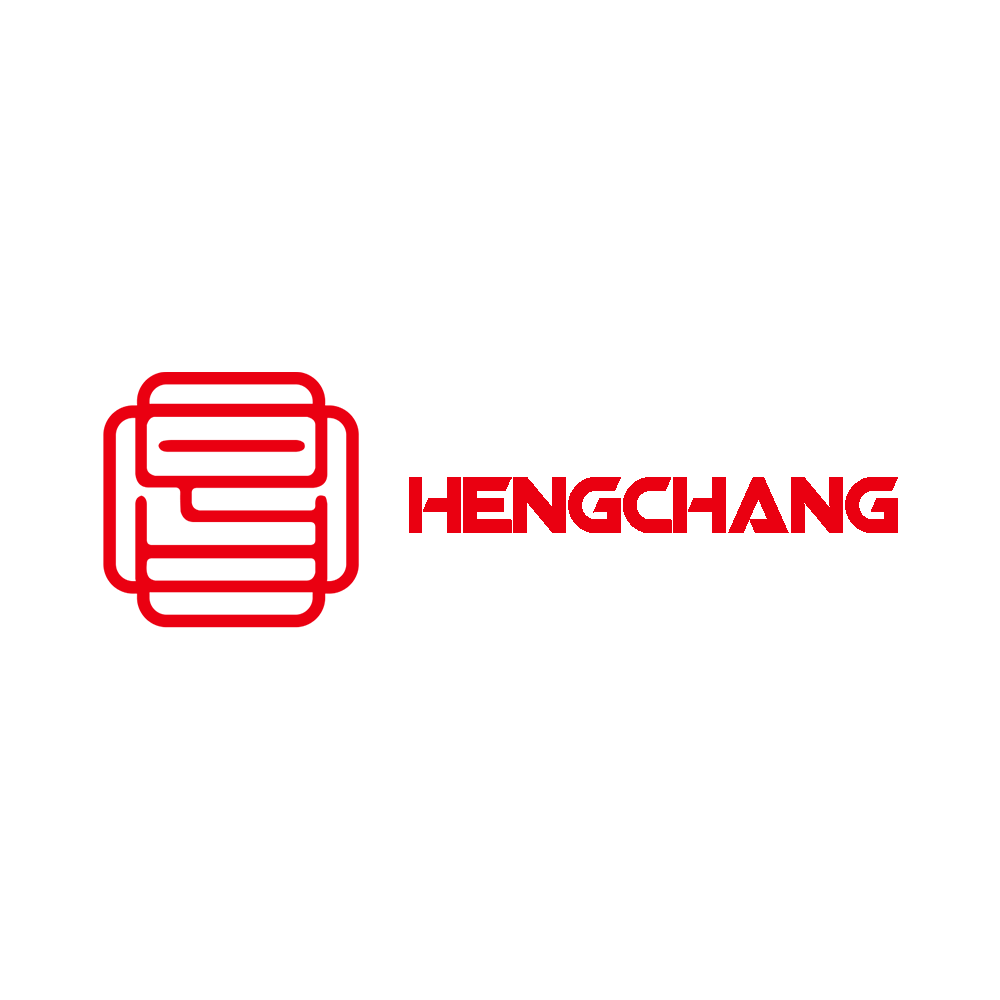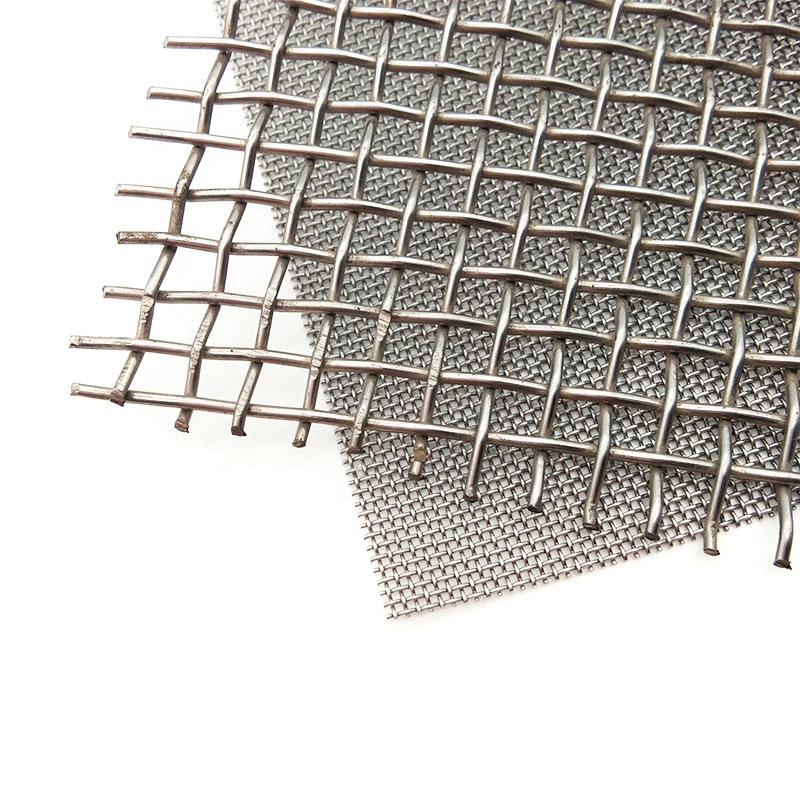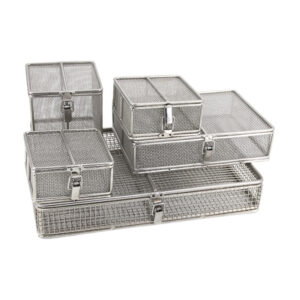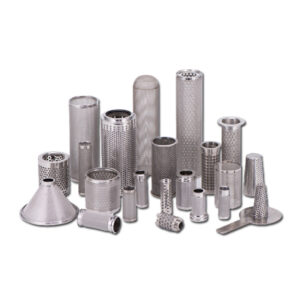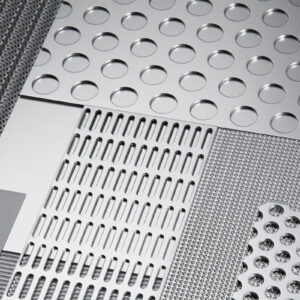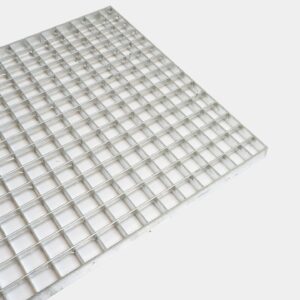描述
Common Woven Wire Cloth Materials
- Carbon Steel: Low, High, Oil Tempered
- Stainless Steel: Non-Magnetic Types 304, 304L, 309, 310, 316, 316L, 317, 321, 330, 347; Magnetic Types 410, 430
- Copper and Copper Alloys: Copper, Brass, Bronze, Phosphor Bronze
- Aluminum and Aluminum Alloys: 1350-H19
- Nickel and Nickel Alloys: Nickel, Monel® 400, Hastelloy B, Hastelloy C, Inconel® 600, Incoloy® 800, Nichrome I, Nichrome V
Stainless steel wire mesh, specifically Type 304 stainless steel, is the most popular material for producing woven wire cloth. Also known as 18-8 because of its 18 percent chromium and eight percent nickel components, 304 is a basic stainless alloy that offers a combination of strength, corrosion resistance and affordability. Type 304 stainless steel is normally the best option when manufacturing grilles, vents or filters used for the general screening of liquids, powders, abrasives and solids.
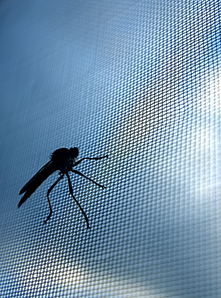


Woven wire mesh products, also known as woven wire cloth, are woven on looms, a process that is similar to the one used to weave clothing. The mesh can consist of various crimping patterns for the interlocking segments. This interlocking method, which entails the precise arrangement of the wires over and under one another prior to crimping them into place, creates a product that’s strong and reliable. The high-precision manufacturing process makes woven wire cloth more labor-intensive to produce therefore it is typically more expensive than welded wire mesh.
Woven Wire Mesh Crimp and Weave Styles
Wire openings and sizes range broadly. Marco Specialty Steel offers many different weave patterns and pre-crimp styles. Below are examples of crimp and weave styles that are available. See our Crimp and Weave Styles page for more detailed information.
Woven Wire Cloth Crimp Styles




- Lock crimp: Lock crimp is comprised of pre-crimped wire featuring the formation of knuckles or bumps over intersecting sets of wires. This locks the mesh in place to create an extremely rigid product.
- Double crimp: Double crimp wire mesh cloth exhibits a pattern of warp wires passing over and underfill wires.
- Intercrimp: Commonly used for screens and architectural applications, intercrimp woven wire mesh provides superior strength and stability, while offering a rigid mesh solution.
- Flat top: As the name implies, the flat top crimp style features a smooth top plane that facilitates the flow of materials.
Woven Wire Weave Styles
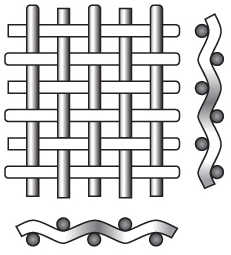
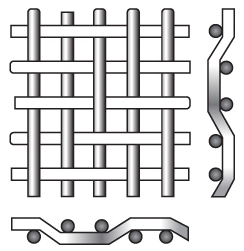
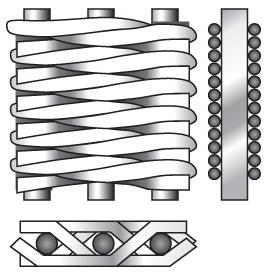
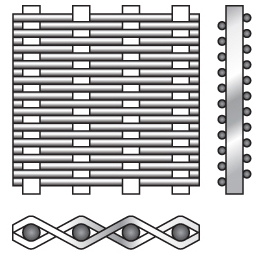
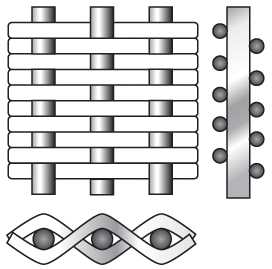
- Plain/Double: This standard woven wire cloth weave type produces square openings where the warp wire alternately passes over and under the fill wire at right angles.
- Twill Square: Typically used for applications that require managing heavier loads and finer filtration, twill square woven wire mesh exhibits a distinctive parallel diagonal pattern.
- Twill Dutch: Twill Dutch is known for its superior strength, which is achieved by packing a high volume of wire in targeted areas of the weave. This woven wire cloth style can also filter particles as small as two microns.
- Reverse Plain Dutch: This woven wire weave style features a large warp wire and smaller shute wire count that the Plain or Twill Dutch styles.
- Plain Dutch: The Plain Dutch style features diagonally slanted openings that are difficult to see, but produces a strong, compact wire mesh that works well for filtering cloth applications.
- See our Crimp and Weave Styles page for more detailed information.
Woven wire mesh table

